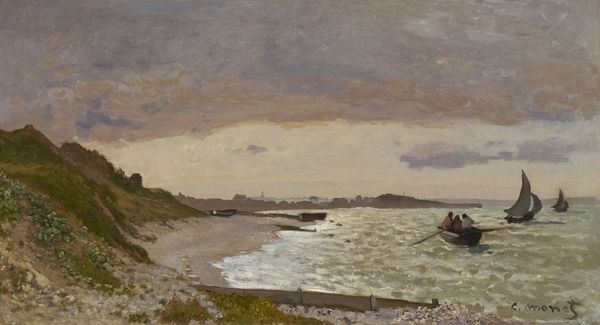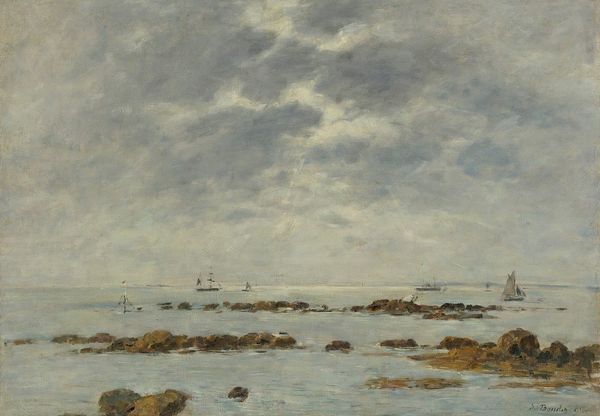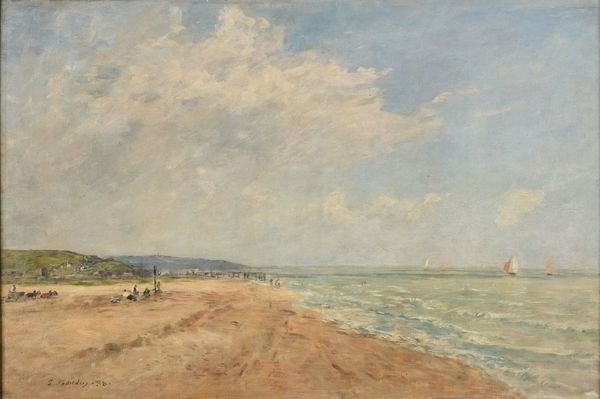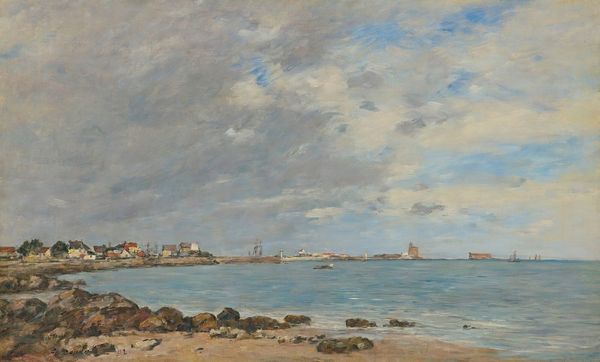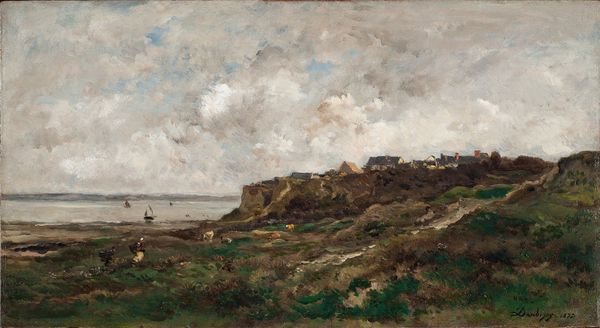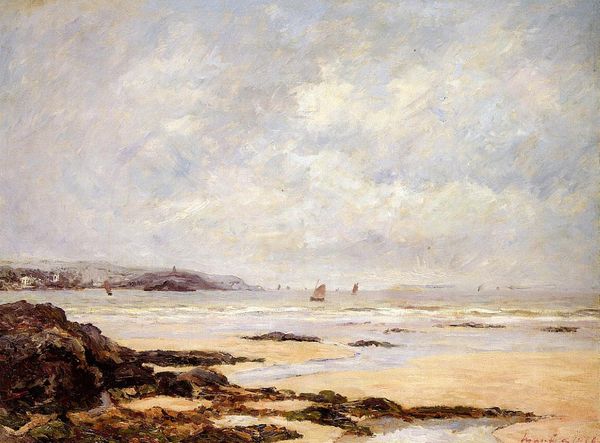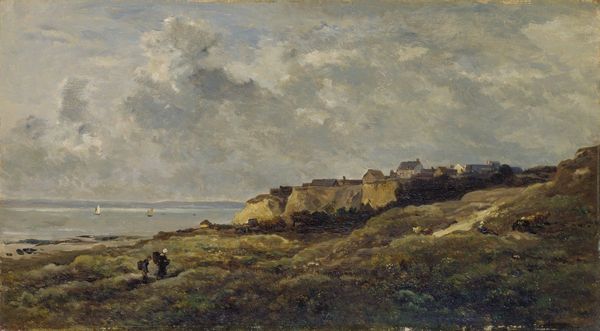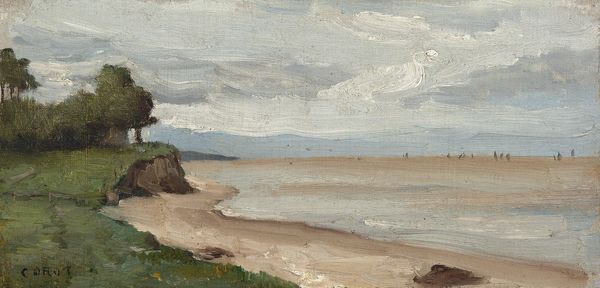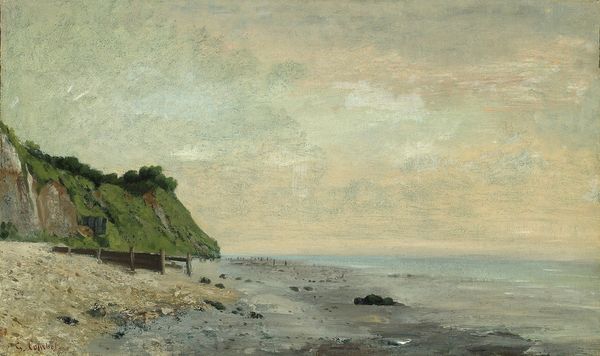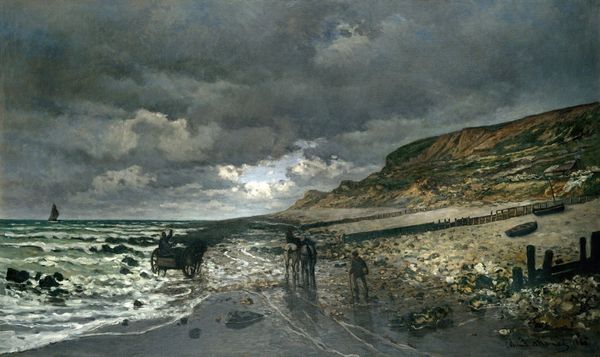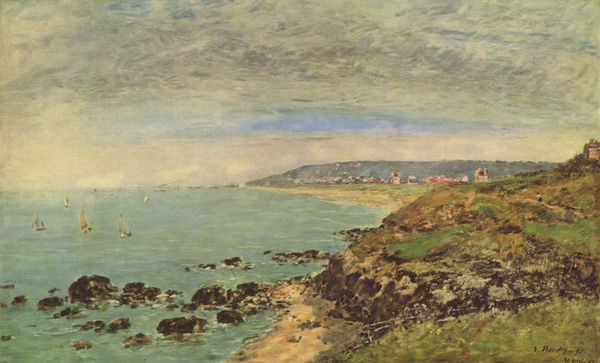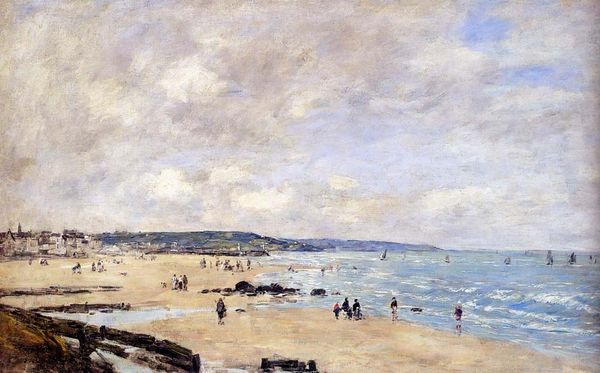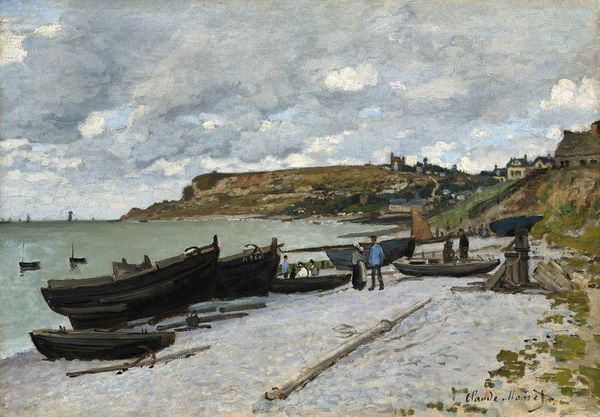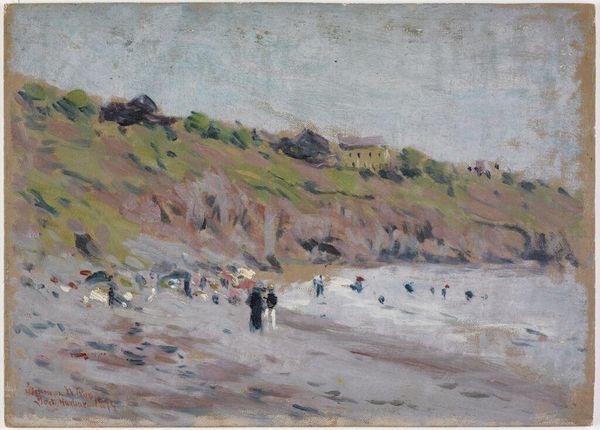
painting, plein-air, oil-paint
#
painting
#
impressionism
#
plein-air
#
oil-paint
#
landscape
#
impressionist landscape
#
oil painting
#
cityscape
Copyright: Public domain
Editor: Here we have Claude Monet’s *The Beach at Saint-Adresse*, painted in 1876. It's an oil painting, capturing a coastal scene with visible brushstrokes. It’s evocative – there's a sense of serene isolation that pervades the scene, don’t you think? What stands out to you in this piece? Curator: What strikes me immediately is the potent iconography of place and memory at play. Consider, for example, the French flag fluttering on some of the vessels: a patriotic emblem made personal. Does this image evoke nostalgia or perhaps a more complex longing for a bygone era? Editor: I hadn't considered the national identity being a symbolic focal point, how fascinating! Curator: Indeed. Note also how the overcast sky isn’t simply a depiction of weather but rather contributes to the introspective mood. What emotional significance might these muted tones carry, particularly when juxtaposed against symbols of national pride? Editor: Maybe it's the bittersweet feeling of patriotism mixed with a somber understanding of national burden? Or even perhaps an illusion of serenity on the surface that contrasts the complicated socio-economic contexts? Curator: Precisely. These nuanced readings of visual symbols are how images continue to speak across time and cultural shifts. Each brushstroke adds layers of historical understanding. Editor: That definitely puts the painting into a new perspective. I guess I now see how much a painting could reveal based on social-historical narratives in symbology and artistic language. Thanks! Curator: My pleasure. Remembering our collective past through symbolic language illuminates our present.
Comments
No comments
Be the first to comment and join the conversation on the ultimate creative platform.
